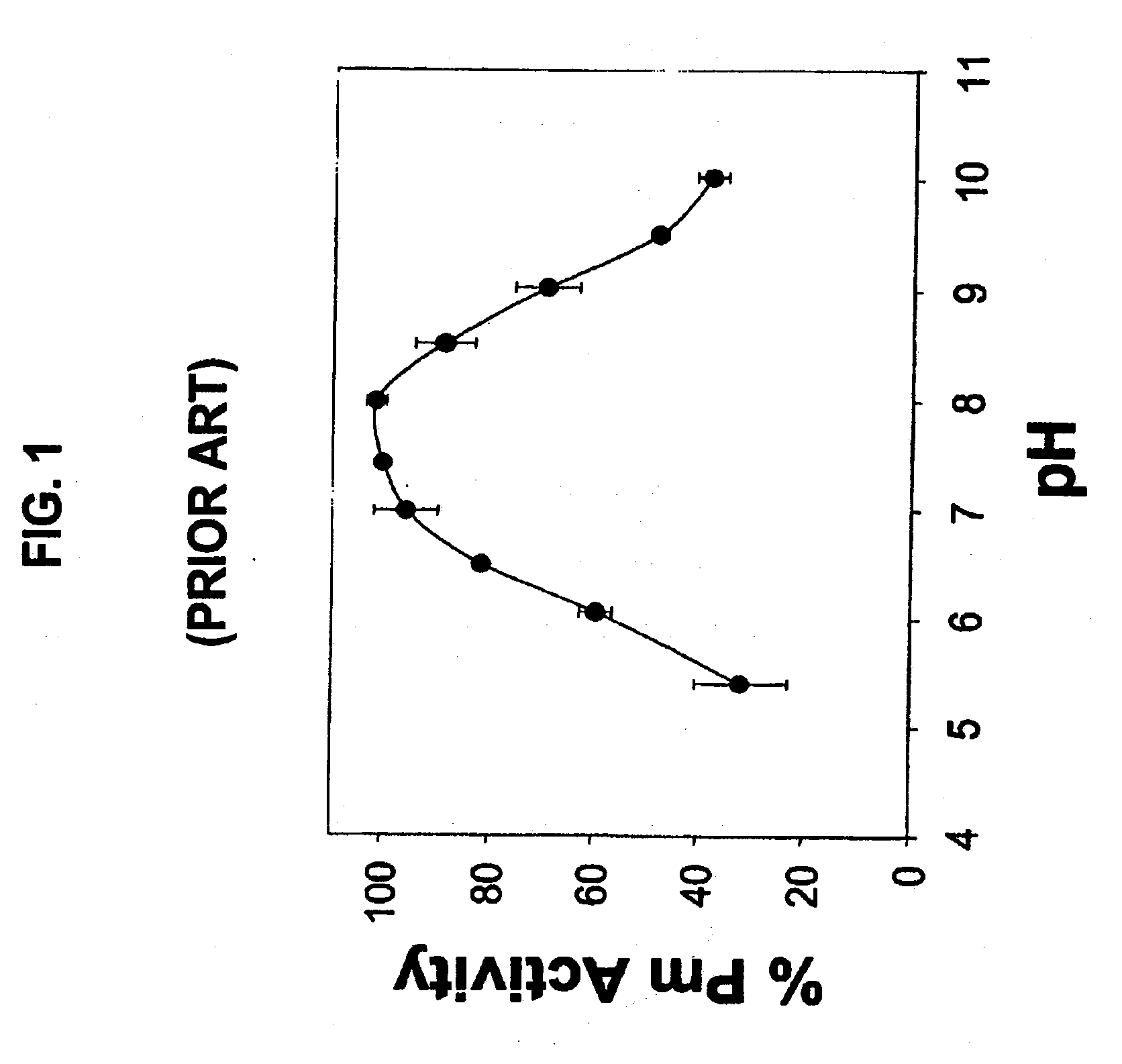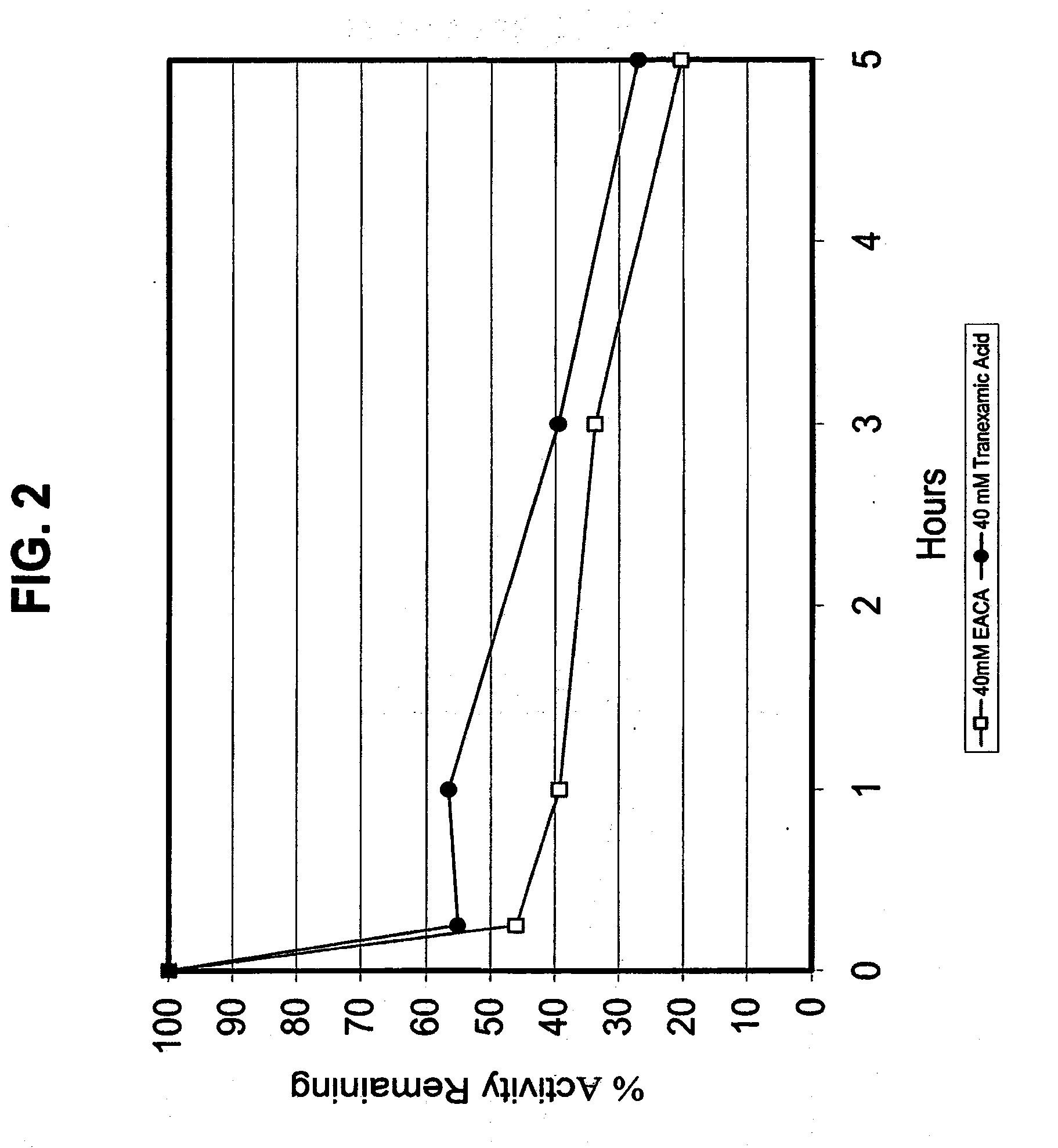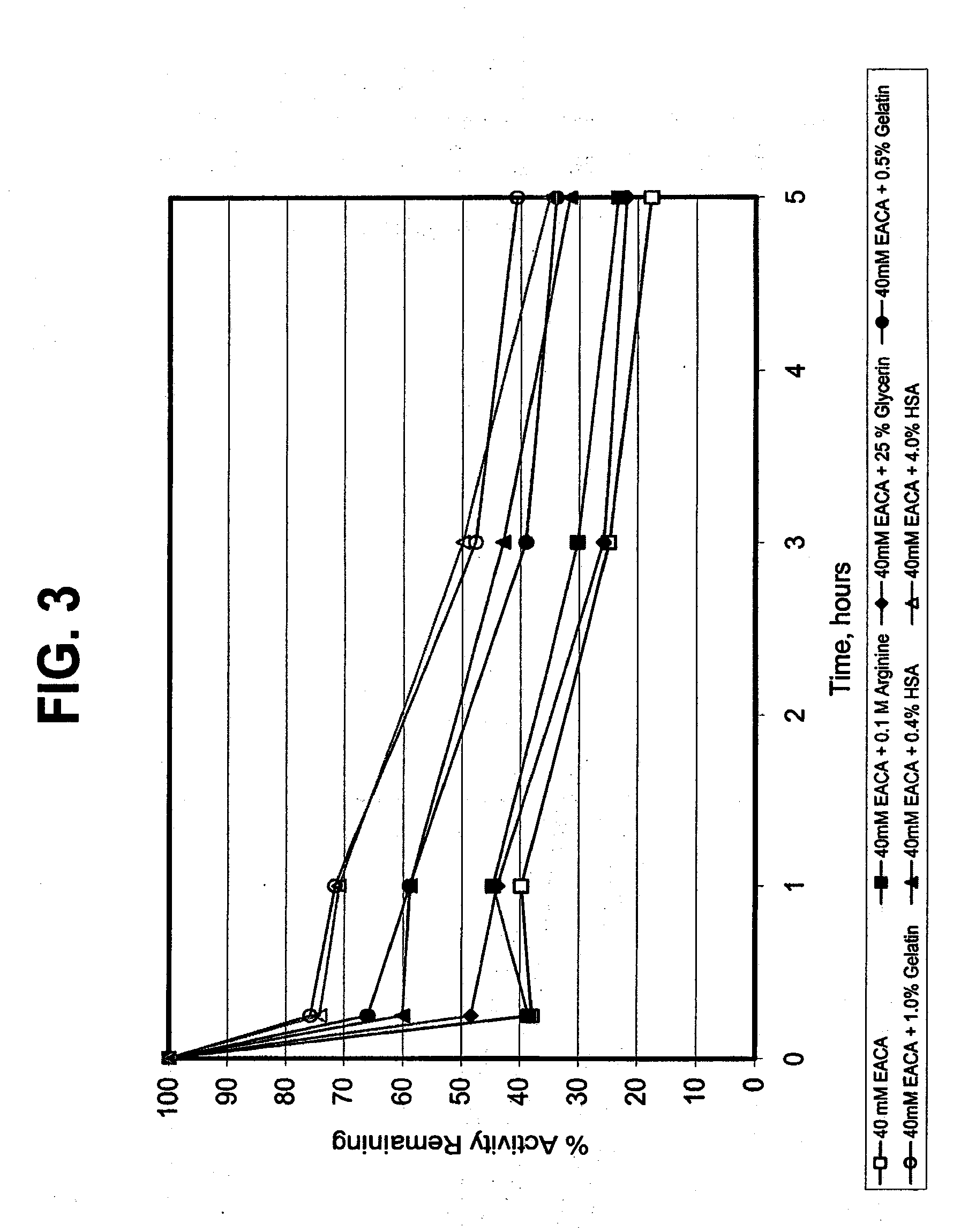Method for prolonging activity of autodegradable enzymes and compositions thereof
a technology of autodegradable enzymes and compositions, which is applied in the direction of enzyme stabilisation, drug compositions, peptide/protein ingredients, etc., can solve the problems of retinal tear, high probability of retinal detachment, and rapid autodegradation of plasmin, so as to prolong the activity of an enzyme and prolong the activity of said enzym
- Summary
- Abstract
- Description
- Claims
- Application Information
AI Technical Summary
Benefits of technology
Problems solved by technology
Method used
Image
Examples
example 1
Plasmin Precipitation Study in Buffer Solutions
[0110]Sterile, purified, and unbuffered human plasmin (pH of 3.3±0.3) in a stable, lyophilized form and without any preservative was obtained from Talecris, Inc. (Research Triangle Park, N.C.). This acidified, lyophilized plasmin was reconstituted with 0.9% (by weight) NaCl solution to a concentration of 10 mg / ml. An aliquot of this reconstituted plasmin solution was transferred to a PBS buffer solution (pH of about 7.4) containing an additive selected from the group consisting of tranexamic acid (“TXA”), ε-aminocaproic acid (“ε-ACA”), γ-aminobutyric acid, 5-aminovaleric acid, 7-aminoheptanoic acid, glycylglycine, triglycine, L-ornithine hydrochloride, N-α-acetyl-L-arginine, L-arginine, betaine, sarcosine, D-sorbitol, glycerin, and gelatin. Combinations of ε-aminocaproic acid and gelatin or glycerin were also tested. The concentration of plasmin in the additive-containing buffer was 1 mg / ml. The solutions were observed for any precipita...
example 2
Plasmin Precipitation Study in Rabbit Vitreous
[0111]In this study, the reconstituted acidified plasmin solution (10 mg / ml in 0.9% NaCl solution) formulated according to the procedure of Example 1, were used. An amount of this reconstituted acidified plasmin solution was added to a 0.9% NaCl solution containing one or more selected additives as shown in Table 2 below, to produce a plasmin formulation containing the additive or additives and a plasmin concentration of 1 mg / ml. An amount of 50 μl of each of the plasmin formulations was added to a 0.5 ml sample of homogenized young rabbit vitreous, which has a pH of about 8.5. The vitreous samples were observed for any precipitation within 2 hours following addition of plasmin, and the results are shown in Table 3.
TABLE 3Effects of Additives on Plasmin Precipitation in Rabbit VitreousTestpH of the FinalNo.AdditivePrecipitationFormulation330.9% (by weight)Yes3-4NaCl (No additive)3440 mM ε-No6aminocaproic acid3540 mM ε-No6aminocaproic aci...
example 3
Plasmin Activity in Additive-Containing Buffers
[0112]In this study, the reconstituted acidified plasmin solution (10 mg / ml in 0.9% NaCl solution) and the buffered plasmin compositions containing selected additives, formulated according to the procedure of Example 1, were used. An amount of 50 μl of each of the buffered plasmin compositions was added to a 1.5 ml sample of PBS buffer (pH of about 7.4). The sample was stored at 37° C. Aliquots of the sample were collected at time 0, 1, 3, and 5 hours following addition of plasmin, and analyzed for plasmin activity by chromogenic assay using the plasmin substrate S-2251. S-2251 is a short peptide substrate for plasmin (H-D-Val-L-Leu-L-Lys-p-nitroaniline dihydrochloride, available from Chromogenix-Instrumentation Laboratory SpA, Milano, Italy). Plasmin hydrolyzes this substrate between the lysine residue and the p-nitroaniline moiety. The method determines the activity of plasmin based on the difference in absorbance (optical density) be...
PUM
| Property | Measurement | Unit |
|---|---|---|
| concentration | aaaaa | aaaaa |
| temperature | aaaaa | aaaaa |
| temperature | aaaaa | aaaaa |
Abstract
Description
Claims
Application Information
 Login to View More
Login to View More - R&D
- Intellectual Property
- Life Sciences
- Materials
- Tech Scout
- Unparalleled Data Quality
- Higher Quality Content
- 60% Fewer Hallucinations
Browse by: Latest US Patents, China's latest patents, Technical Efficacy Thesaurus, Application Domain, Technology Topic, Popular Technical Reports.
© 2025 PatSnap. All rights reserved.Legal|Privacy policy|Modern Slavery Act Transparency Statement|Sitemap|About US| Contact US: help@patsnap.com



